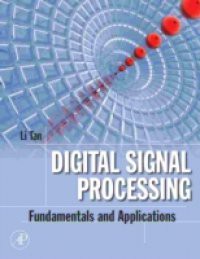
Аннотация
Extracting actionable information from data is changing the fabric of modern business in ways that directly affect programmers. One way is the demand for new programming skills. Market analysts predict demand for people with advanced statistics and machine learning skills will exceed supply by 140,000 to 190,000 by 2018. That means good salaries and a wide choice of interesting projects for those who have the requisite skills. Another development that affects programmers is progress in developing core tools for statistics and machine learning. This relieves programmers of the need to program intricate algorithms for themselves each time they want to try a new one. Among general-purpose programming languages, Python developers have been in the forefront, building state-of-the-art machine learning tools, but there is a gap between having the tools and being able to use them efficiently.
Programmers can gain general knowledge about machine learning in a number of ways: online courses, a number of well-written books, and so on. Many of these give excellent surveys of machine learning algorithms and examples of their use, but because of the availability of so many different algorithms, it’s diff i cult to cover the details of their usage in a survey.
This leaves a gap for the practitioner. The number of algorithms available requires making choices that a programmer new to machine learning might not be equipped to make until trying several, and it leaves the programmer to fi ll in the details of the usage of these algorithms in the context of overall problem formulation and solution.
This book attempts to close that gap. The approach taken is to restrict the algo-rithms covered to two families of algorithms that have proven to give optimum performance for a wide variety of problems. This assertion is supported by their dominant usage in machine learning competitions, their early inclusion in newly developed packages of machine learning tools, and their performance in comparative studies (as discussed in Chapter 1, “The Two Essential Algorithms for Making Predictions”). Restricting attention to two algorithm families makes it possible to provide good coverage of the principles of operation and to run through the details of a number of examples showing how these algorithms apply to problems with different structures.
The book largely relies on code examples to illustrate the principles of oper-ation for the algorithms discussed. I’ve discovered in the classes I have taught at University of California, Berkeley, Galvanize, University of New Haven, and Hacker Dojo, that programmers generally grasp principles more readily by seeing simple code illustrations than by looking at math.
This book focuses on Python because it offers a good blend of functionality and specialized packages containing machine learning algorithms. Python is an often-used language that is well known for producing compact, readable code.
That fact has led a number of leading companies to adopt Python for prototyp-ing and deployment. Python developers are supported by a large community of fellow developers, development tools, extensions, and so forth. Python is widely used in industrial applications and in scientif i c programming, as well.
It has a number of packages that support computationally intensive applica-tions like machine learning, and it is a good collection of the leading machine learning algorithms (so you don’t have to code them yourself). Python is a better general-purpose programming language than specialized statistical languages such as R or SAS (Statistical Analysis System). Its collection of machine learning algorithms incorporates a number of top-f l ight algorithms and continues to expand.





Комментарии к книге "Machine Learning with Spark™ and Python®"